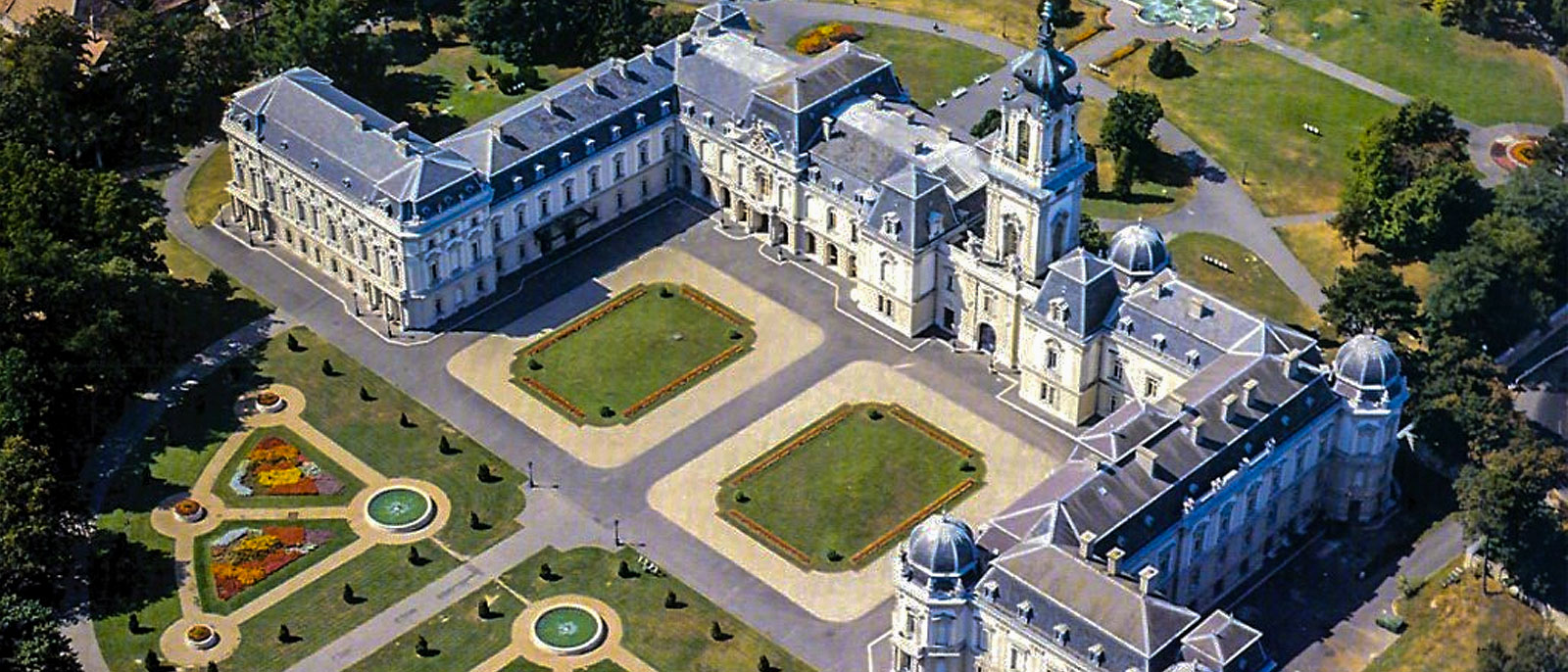Festetics Mansion in Keszthely

The Festetics Mansion in Keszthely is Hungary’s most visited manor house. Today, it operates as a museum under the name of Helikon Kastélymúzeum (Helikon Mansion Museum). It has six permanent exhibitions in five buildings.
The Festetics Family owned the castle, which was continuously built since the middle of the 18th century, for 200 years. The Festetics Family was one of Hungary's most important noble families. Its members played an important role in the country's political, economic, scientific and cultural life.
Kristóf Festetics initiated the construction of the Festetics Mansion in 1745, he founded the Georgikon and the Helikon Celebrations. The middle, eastern wing of the current building dates back to the first construction period (1745-1750). The Baroque-style two-storeyed mansion had 34 rooms according to the inventory of the age. According to the plans, the mansion would have been transformed into a U-shaped building with two wings, extending backwards, but only the southern library wing was built in a Neo-classical, late Baroque (Copf) style. The interior works lasted until 1804.
Tasziló Festetics (II) had the next significant reconstruction and extension made between 1883 and 1887 in Historicist (Neo-Baroque and Neo-Rococo) style. He had the middle, eastern wing extended and the northern wing built. The tower was also built that time. The whole building was covered with a garret roof, and central heating and water pipes were installed. The mansion gained its present form that time by the reconstruction of the façades and interior spaces, and especially the staircases.
The park of the mansion is a conservation area. In the park, there are a palm house and the former carriage house, where the coach exhibition can be seen today, and opposite the rear exit of the park, there is another building belonging to the mansion museum where the hunting and historic model railway exhibitions are displayed. Near the mansion, in the Kastély Street, stands the Amazon House Visitor Centre.
The exhibition on the aristocratic way of life and the Helikon Library can be viewed in the mansion. The original or exactly reconstructed interior rooms of the interior design exhibition show the life of aristocrats in the 18th-19th century. The greatest value of the mansion is Hungary's only intact private library with more than 80,000 volumes.
The event centre in the northern wing of the mansion is suitable for organising representative events. The ballrooms provide a perfect venue for weddings, conferences, banquets, and receptions.
The main material of the carriage exhibition are the collection of more than fifty coaches, carriages and riding sleighs from the 18th-19th centuries related to the life of aristocrats, and a collection of other relics related to horseback riding, and artworks.The hunting exhibition displays the trophies of wild animal species hunted on five continents. Visitors can get acquainted with the majority of the animals by walking at their “natural habitats”. The experience is complemented by ethnographic and art collections related to the subject.
The historic model railway exhibition is one of the largest in Europe. The giant models illustrating the railways of 19th-21st century Hungary, Austria and Germany are the exact replicas of the original station buildings, railway tracks, locomotives and trains.
The exhibition "Aristocratic travels, travel adventures" opened at the Amazon House Visitor Centre presents the travel culture and the practice of travelling of the nineteenth and twentieth centuries through demonstration materials.
The palm house, built in the 1880s, and its exotic plants preserve the traditions of orangeries and tropical greenhouses that were part of the aristocratic lifestyle. A rock garden, an aquarium, a pond and a bird park surround the palm house building.
